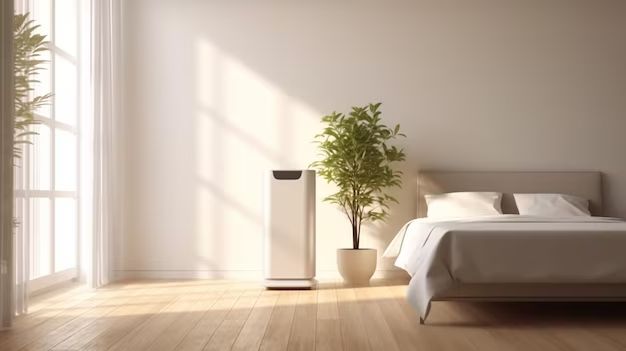Page Contents
Quick Answer
A dehumidifier can slightly cool a room in summer by removing moisture from the air. However, a dehumidifier is not designed to significantly lower air temperature like an air conditioner. The small amount of cooling from moisture removal is usually not enough to make a hot room feel comfortable.
How Does a Dehumidifier Work?
A dehumidifier removes excess moisture from the air through a refrigeration process. Here’s how it works:
1. Air is drawn into the dehumidifier
A fan pulls air from the room into the dehumidifier.
2. Air passes over cold coils
The air is blown over a set of cold coils. When the warm, moist air hits the cold coils, the moisture condenses and drips into a reservoir.
3. Drier air circulates back into the room
The now drier air is reheated by the dehumidifier and circulated back into the room. This process continuously removes moisture from the air.
Does Moisture Removal Cool the Air?
When moisture condenses on the dehumidifier’s coils, it releases heat. This heat warms the coils, which has to be dissipated by the dehumidifier. So a small amount of heat is removed from the air during the moisture removal process.
However, the amount of cooling is very slight, usually only around 1-4°F. This minor change in temperature is hardly noticeable in an 80°F+ room in summer.
While the moisture removal does technically result in a bit of cooling, dehumidifiers only reduce humidity levels. They are not designed or equipped to provide real air conditioning like a window or portable AC unit.
Other Impacts of Lower Humidity
So while a dehumidifier doesn’t provide substantial direct cooling, reducing humidity can make a warm room feel more comfortable:
• Less muggy feeling
High humidity feels oppressive. Removing moisture can make the air feel fresher.
• Increased evaporation
Dry air allows sweat to evaporate faster for natural cooling. Lower humidity makes evaporation more efficient.
• Less heat index
The heat index combines temperature and humidity. Higher humidity causes the air to feel hotter than it actually is. Less humidity lowers the heat index.
So even though the temperature decrease is minimal, lower humidity can make a room more bearable in summer. The reduced mugginess has a cooling effect on the body’s natural evaporation process.
Using a Dehumidifier for Summer Cooling
A dehumidifier can provide a little bit of indirect cooling by making a humid room more comfortable. Here are some tips for using a dehumidifier to help cool a room in summer:
– Place the dehumidifier in central spot to maximize air circulation.
– Complement moisture removal with fans to promote evaporation.
– Keep doors and windows closed so drier air isn’t lost from the room.
– Use it along with other cooling methods like shades and AC for multiplied effects.
– Clean or replace filters regularly to maintain moisture removal performance.
– Pair it with an air conditioner to control humidity and temperature simultaneously.
Comparison to Other Cooling Methods
Here is how the slight cooling effect of a dehumidifier compares to other ways to cool a room:
| Cooling Method | Temperature Reduction |
|---|---|
| Dehumidifier (moisture removal) | 1-4°F |
| Fan (increased air flow) | 2-4°F (through increased evaporation) |
| Window AC unit | 10-20°F+ (depending on BTU rating) |
| Portable AC unit | 5-10°F (less than window units) |
A dehumidifier alone isn’t adequate for cooling a hot room. For real temperature reduction, a window air conditioner or portable AC unit is needed. A dehumidifier can complement an AC by controlling humidity.
Conclusion
In summary, dehumidifiers provide marginal direct cooling by condensing moisture from warm air. The small amount of heat removal during moisture condensation results in only a 1-4°F temperature decrease. However, by lowering humidity, dehumidifiers can create an indirect cooling effect through evaporation and lowering the heat index. While helpful, this minimal cooling is not sufficient as the sole method of cooling a hot room in summer. For significant temperature reduction, an air conditioner or other cooling methods are needed along with dehumidification.
